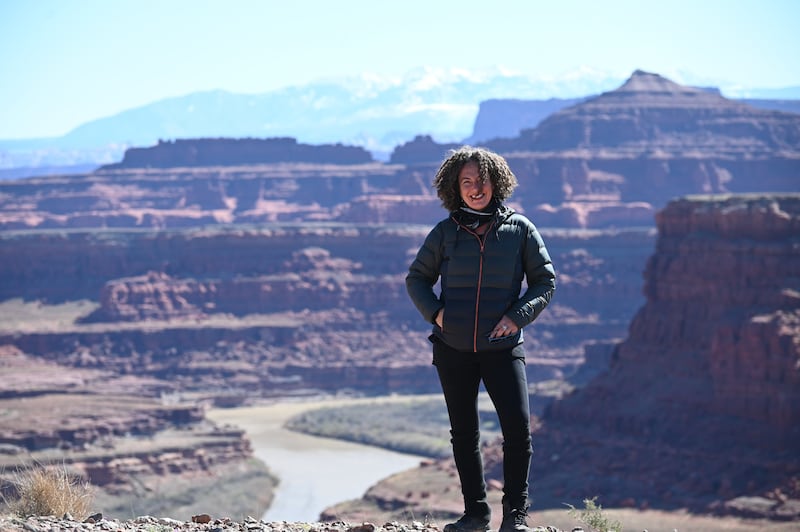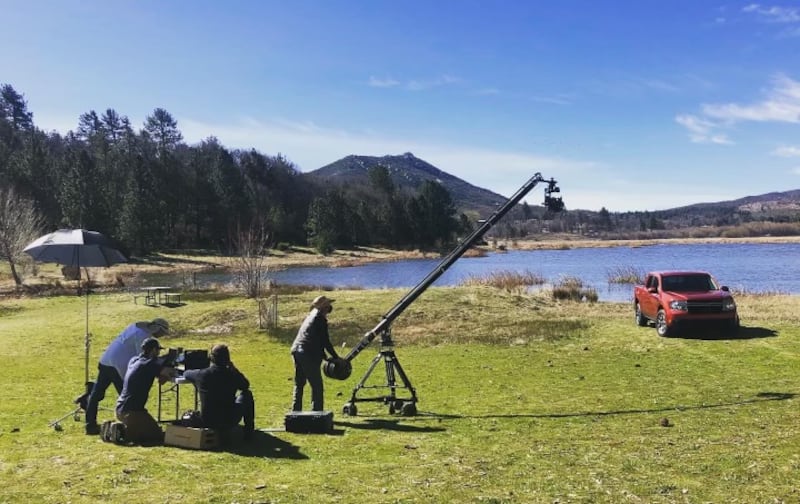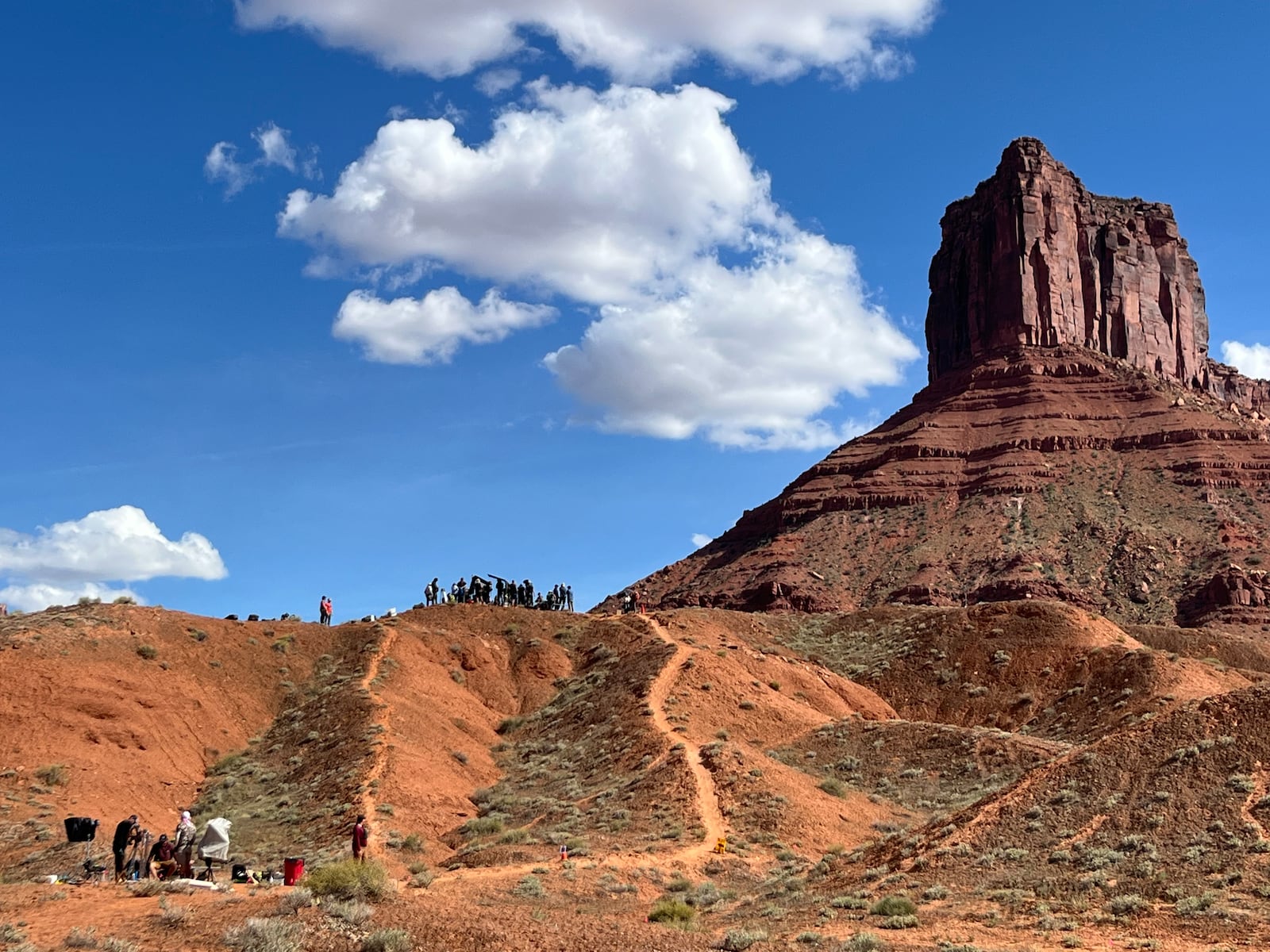This story appears in the July 2025 issue of Utah Business. Subscribe.
Utah’s 29 counties each offer businesses and employees something different. Named the best state in the nation two years in a row, Utah’s varied counties provide opportunities for all. Let’s visit Grand County.
A Q&A with Bega Metzner, director of the Moab to Monument Valley Film Commission.
What are your days like as director of the Moab to Monument Valley Film Commission?
No two days are alike, ever. It’s a very inconsistent job because of the nature of the film industry. I’m basically a liaison between any type of media production and the [geographical] areas that I represent, which are Grand County and San Juan County. That is why it’s the “Moab to Monument Valley Film Commission,” or for more of a visual experience, “Thelma & Louise” to “Forrest Gump.” These filming locations have been used for filming for over 75 years. [We are] the longest ongoing film commission in the world; we started in 1949.
How did the film commission get started?
At first, it wasn’t funded through the county; it was donation-based and came from public demand. People wanted it as citizens because they saw John Ford [shooting films in the area] with this really cool guy named John Wayne. I think it is often forgotten that film and film history bridged an economic gap during the depression, making [Grand County] a viable area for a different type of economic impact.
The idea of a film commission came up [as a way to help film crews]. What are their needs? They need food. They need places to stay. Whatever the needs were then, I still deal with them today, just in a different way.
Today, I am funded by transient room taxes. I like to look at it in the business sense of things as a self-generating entity. It’s an allowable use for transient room taxes because it’s promoting the area. Any job that comes in here is feeding into that pot of transient room tax dollars, which would then fund the film commission.

What is the economic impact of the film commission on Grand County? How has that changed over time?
[The economic impact] is a blind spot. Films come here, but nobody sees them unless you’re driving up the river road and see all their trucks at their base camp. No one’s driving by a hotel and seeing all the cars in the lot with 110 people in four different hotels and going, “Oh, those must be film people,” unless they happen to know what a film truck looks like.
Some years are better than others, and some months are better than others. Can I tell you what’s going to come here next year? Can I tell you what my being at the Cannes Film Festival is going to bring in terms of ROI next year? No, I cannot. I’d love to say there was a math problem that you could just put it together, but the screen tourism part isn’t until after a movie comes out, when it gets recognized that that was Utah. Thelma & Louise Point is an actual location that used to be called Fossil Point. You can’t Google “Fossil Point” anymore. You have to Google “Thelma & Louise Point.” You know why that is? Screen tourism.
Often, it’s hard to distinguish between what comes in as a film production versus what comes in as screen tourism. A study from a couple of years ago said 37 percent of people come to Utah because they saw it in a movie. Utah locations are often used as doubles for other locations. We need to get the word out there that these movie scenes were filmed here!

Tell me about the award you recently won!
I go to the Cannes Film Festival because it’s a networking and marketing opportunity. A couple of weeks before, I saw that the 2025 Global Production Awards presented at Cannes would have a Film Commission of the Year award. I submitted in two separate categories with a lot of help from one of the producers and the production designer from “Horizon: An American Saga.”
Both submissions were shortlisted, and I was a finalist in both categories. I didn’t win [one of the categories. But for the other,] I was the only one who got a “highly commended” award, [which isn’t first place] but a huge honor. They literally made a specific award [just for me.] That’s a really big deal on a global stage. And for me, it felt like a really big deal because I was amongst strangers, but I was also amongst colleagues from film commissions from across the world.
What do you want filmmakers to know about Utah?
I went to Sundance six or seven years ago, and I met a German guy. He came to the space that I was [presenting in], and there was a looping reel [of Utah production locations]. I was like, “Look, that’s Utah. That’s Moab. That’s Moab. That’s Moab.” He said, “You mean, it’s real?” I said, “It’s three and a half hours down that way, I’ll take you!” [I want filmmakers to come] see Utah with their own eyes because it makes a difference. Every day has different weather. The cloud cover is different, and the contrast on the rocks is different. When there’s snow on the red rocks, it’s extraordinary, and it is real.

